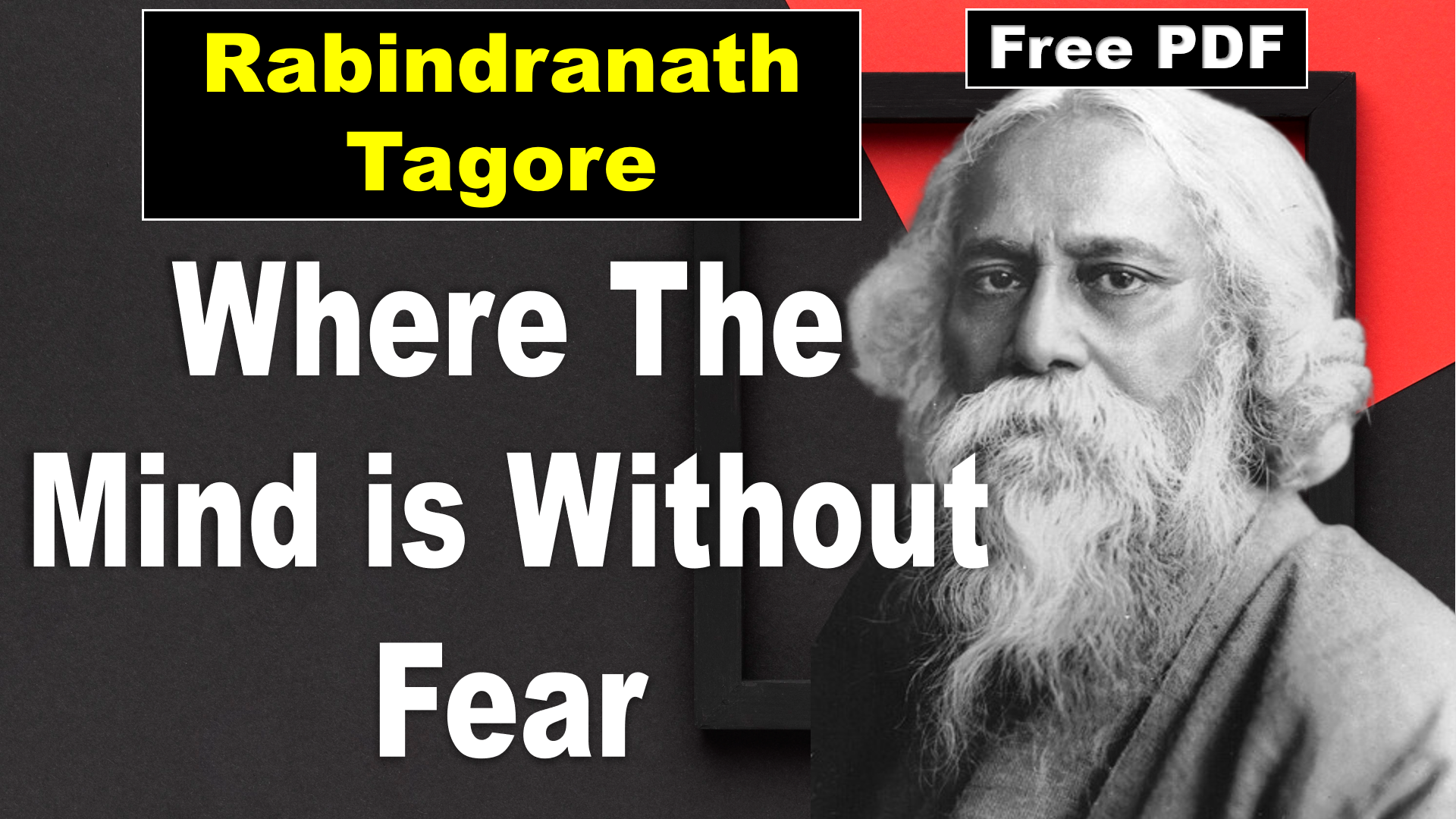Where The Mind Is Without Fear Questions Answers
Very Short Answer Questions
1. Who wrote the poem “Where the mind is without fear”?
Rabindranath Tagore
2. In which collection was the poem first published?
Gitanjali
3. What is the central theme of the poem?
Freedom and enlightenment
4. What does the speaker desire for their country in the poem?
Freedom from fear and ignorance
5. How should knowledge be in the ideal society described in the poem?
Free and accessible to all
6. What does “narrow domestic walls” refer to in the poem?
Divisive boundaries and prejudices
7. What is the source of words in the ideal society?
The depth of truth
8. How does the speaker describe the striving for perfection?
Tireless
9. What has happened to reason in the ideal society described in the poem?
It has not lost its way.
10. What is the “dreary desert sand of dead habit” in the poem?
Stagnation and conformity
11. Who is the speaker addressing in the poem?
The Father, symbolizing a higher power or guiding force
12. What is the ultimate goal for the country in the poem?
To awaken into a “heaven of freedom.”
13. What is the tone of the poem?
Hopeful and visionary
14. What kind of society does the poem envision?
An enlightened and united society free from fear and ignorance.
15. What literary device is used in the phrase “Where the mind is without fear”?
Metaphor, where “fear” represents the limitations on thought and action.
16. What does the poet mean by “where the world has not been broken up into fragments”?
This line refers to a world where people are not divided by religion, race, nationality, or any other factor.
17. What does the poet mean by “knowledge is free”?
The poet means that everyone should have access to knowledge and education, regardless of their social status or background.
18. What is the rhyme scheme of the poem?
The poem does not have a regular rhyme scheme. It is written in free verse.
Short Answer Questions
What is the significance of the phrase “Where the mind is without fear” in the poem?
This phrase signifies the absence of mental and emotional constraints, where individuals can think freely and without apprehension.
Why does the speaker desire a society without “narrow domestic walls”?
The speaker envisions a society where divisions and prejudices do not exist, promoting unity and inclusivity.
What does the poem mean by “tireless striving” towards perfection?
It emphasizes the relentless effort and dedication required to achieve the highest ideals and personal growth.
How does the poem describe the journey of reason?
It describes reason as a clear stream that has not lost its way, highlighting the importance of rational thinking and enlightenment.
Who is the speaker invoking in the line “Into that heaven of freedom, my Father”?
The speaker is invoking a higher power or divine guidance to lead the country towards the desired state of freedom and enlightenment.
What is the overarching message of the poem for the country?
The poem calls for the awakening of the nation into a state of intellectual and moral freedom, where people can think and act with courage and wisdom.
What does “knowledge is free” mean in the context of the poem?
It means that knowledge should be accessible to all without barriers, emphasizing the importance of education and information.
What does the poem imply about the role of truth in society?
The poem suggests that truth should be the foundation for all words and actions, promoting honesty and integrity.
How does the poem convey a sense of hope and optimism?
It conveys hope through its vision of a brighter future where individuals can hold their heads high and the country can attain a state of enlightenment.
What makes the poem relevant and timeless in its message?
The poem’s universal themes of freedom, enlightenment, and unity make it relevant to societies striving for positive change and progress throughout history.










